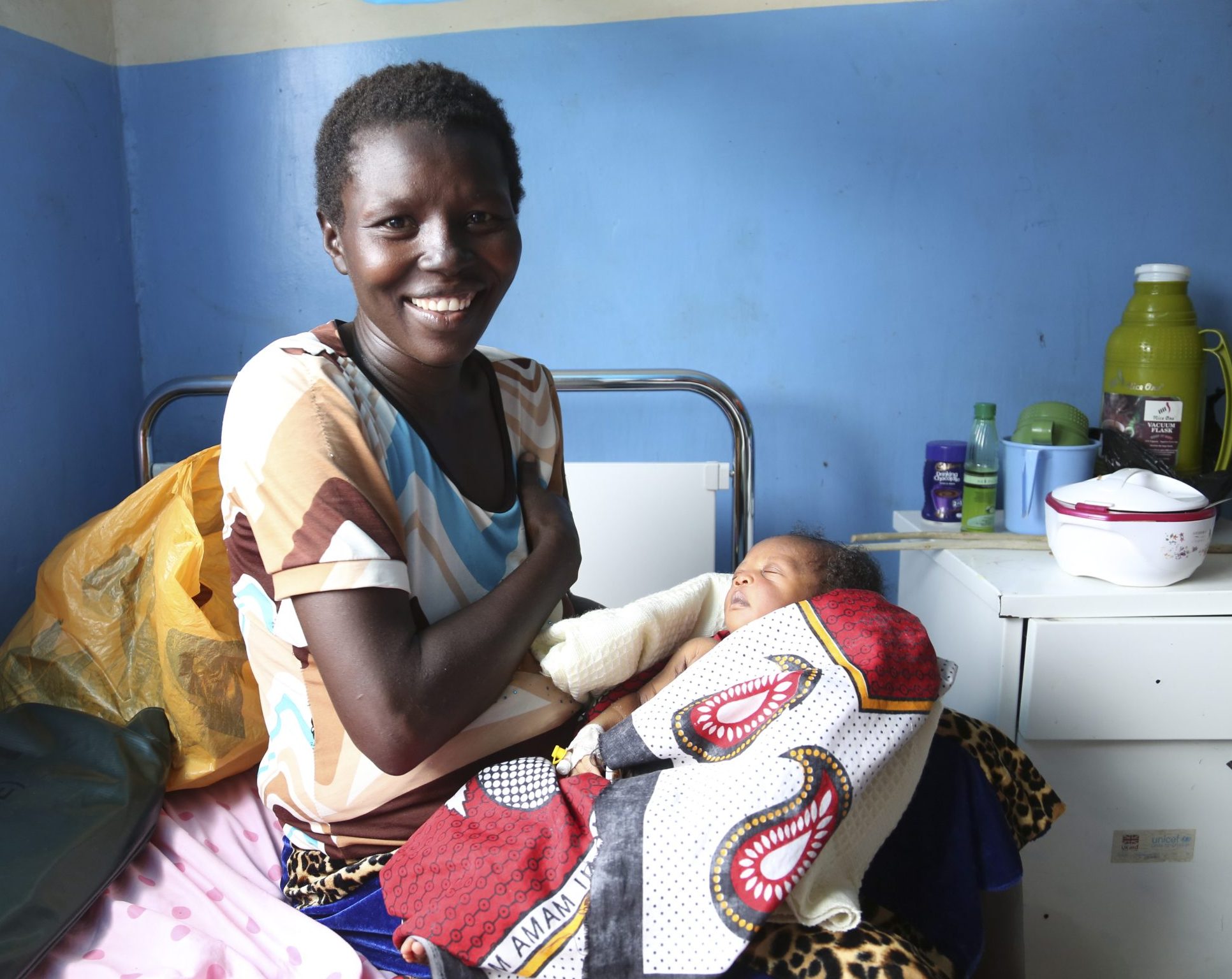We are excited to announce that Brink is now part of Africa Practice. Learn more
Kenya’s health reforms raise funding conundrum

African governments are gradually recognising the need to improve healthcare systems to achieve universal health coverage (UHC), in line with Sustainable Development Goal 3, which envisions healthy lives and well-being for all at all ages. Yet, measured by their own yardstick, African countries are still falling short. The Abuja Declaration committed signatories to allocate 15% of annual budgets to the health sector back in 2001. Nations such as South Africa and Cabo Verde have made incremental progress towards this target since 2001, but the overarching goal remains elusive for the majority.
Growing commitment
In 2019, African heads of state endorsed the Africa Leadership Meeting Declaration, which outlined a comprehensive plan to boost domestic health investments, optimise spending patterns, and streamline health financing systems to pave the way for UHC. Yet even the COVID-19 pandemic was unable to spur a shift in health expenditure distribution patterns across service categories, which remained largely unchanged in 2020. Today, one-third of African healthcare is funded through direct out-of-pocket (OOP) payments, the highest proportion globally. This disproportionately impacts poorer households, pushing them deeper into poverty, and discouraging individuals from seeking care due to cost.
However, the renewed pledge made by African leaders in February 2023 has prompted some leaders to rededicate their efforts towards achieving these goals. Increasingly, African nations are recognising the importance of bolstering their national health financing systems to develop sustainable and comprehensive policies. Some governments are looking to lodestars such as Rwanda, where over 90% of the population is covered by the Mutuelle system – a community-based health insurance scheme that is subsidised by the government. Ghana offers an alternative model, with the National Health Insurance Scheme (NHIS) being funded through a combination of taxes, government subsidies, and user fees, providing coverage to 80% of the population.
Kenya’s reform agenda
Last year, Kenya embarked on a transformative journey towards UHC, spearheaded by four landmark legislative acts – the Primary Health Care Act (PHC Act), Social Health Insurance Act (SHIA), Digital Health Act (DHA), and Facilities Improvement Financing Act (FIFA). These reforms, while promising to revolutionise the healthcare landscape, also raise critical questions about their implementation and potential impact. While allocations to the health sector have risen over the past financial years, the Ministry of Health’s proportion of the central government budget remains low in comparison with other sectors, raising concerns about sustained financing for healthcare initiatives under the new laws. Kenya’s 2023/2024 budget allocates KES 141.2 billion (USD 973.7 million) to the health sector, which represents 11% of its total budget, thereby falling short of the 15% target.
At the core of the PHC Act lies the recognition and compensation of Community Health Promoters (CHPs). Previously, CHPs operated under diverse, county-specific frameworks, receiving stipends with varying amounts and even non-existent in some counties. The national PHC Act establishes a standardised framework and mandates all counties to allocate funds towards the payment of stipends. According to Deputy President Rigathi Gachagua, going forward, the National Government will contribute 50% of the stipend, with the other half being paid by county governments. These changes promise to mobilise more volunteers for community health, as Kenya focused on building strong PHC systems as the cornerstone of its UHC ambitions.
The Social Health Insurance Act represents a seismic shift in health financing by mandating a standardised contribution rate of 2.75% of monthly gross pay for Kenyans employed in the formal sector. By contrast, for the vast informal sector, which comprises 80% of the population, upfront annual contributions are required, with a per-household contribution mechanism. According to the regulations accompanying the Act, the Ministry of Health will collaborate with other institutions including the county government to develop a means-testing instrument that will determine the contribution payable by informal workers, and the number of households in need of financial assistance. In what appears to be an attempt to incentivise contributions, the Act sets registration as a precondition to access healthcare services, and public services more broadly. While promising increased healthcare funding, these reforms raise concerns about affordability for low-income households and the government’s true motivation for the reforms.
The Digital Health Act paves the way for an integrated health information system, aiming to streamline data collection, reporting, and secure sharing. However, a potential overlap between the mandates of the Digital Health Authority and the Office of the Data Protection Commissioner (ODPC) could hinder its implementation.
The Facilities Improvement Financing Act (FIF Act) aims to restore financial autonomy to health facilities by letting them keep and spend all the money they collect, providing a more flexible and efficient financial framework. Previously, county governments exerted control over health facilities’ finances, meaning less autonomy for county hospitals. However, a multi-step process for expenditure approval could impede the envisioned flexibility and efficiency.
Teething problems
As Kenya navigates this transformative landscape, stakeholder reactions vary. Optimism prevails among those who envision a path to universal healthcare, while concerns persist regarding potential impacts on access, equity, and devolution. The Council of Governors has expressed dissatisfaction with the design of the laws which essentially revert to the pre-2010 constitution setup, where some health functions – which are currently devolved – revert to national government control.
Away from the dimming political will from stakeholders crucial in the implementation of the reforms, a winding legal challenge against the legislation awaits resolution. In November a Kenyan businessman launched a High Court petition challenging key sections of the reforms, including the 2.75% mandatory contribution, and registration as a prerequisite to access basic services. Following the petition and pending determination, the court suspended the collection of contributions. This decision has since been overturned by the Court of Appeal, greenlighting the collection of contributions, though provisions linked to accessing basic services remain suspended. No specific date has been set for the High Court’s final decision. The Ministry of Health began its public participation on accompanying regulations in February following the court’s go-ahead.
Proof in the pudding
Proper enactment and enforcement of these new laws has the potential to significantly reduce out-of-pocket health expenses for households, advancing progress towards UHC nationwide. However, while the new laws are commendable, significant gaps need to be addressed:
Successful implementation hinges on healthcare receiving a sufficient budgetary allocation. While Kenya has increased expenditure on healthcare in recent years, the sector receives less than 15% of the national budget – equivalent to 5% of GDP – raising questions about the viability of the proposed measures. Additionally, with declining donor support, efficient mobilisation and utilisation of the limited resources is also paramount to effectively achieve the goals of the new laws.
Additionally, the alignment and seamless integration of the laws with the existing legal regime is crucial to effectiveness. For instance, the overlap between the mandates of the Digital Health Authority and the ODPC could complicate the implementation of the DHA. Similarly, the lack of clarity surrounding the financing of community health units and primary care networks under the PHA raises concerns about their sustainability and potential inconsistencies with the FIFA and SHIA. Addressing any ambiguities is essential to ensure equitable access to quality healthcare, avoiding potential complications.
Political will is equally crucial. The effectiveness of the new laws hinges on securing strong political commitment from county governments. For instance, aligning on the standardised framework that mandates county-level funding for stipends is vital for guaranteeing the sustainability of community health units. Likewise, developing a fair means-testing mechanism for informal worker contributions is dependent on the active participation and political commitment of county governments.
Finally, building public confidence and buy-in, particularly among low-income and non-salaried households, is essential for the successful implementation of the laws. Sensitisation campaigns tailored to these communities may be necessary to secure support among sceptical Kenyans.
About the Authors
Selina Onyando is a consultant at Africa Practice focusing on tech policy and the creative economy. Selina can be contacted at [email protected].
Anjola Folarin is an Associate Consultant at Africa Practice with a particular focus on human capital, gender and education advocacy across sub-Saharan Africa. Anjola can be contacted at [email protected]
Proud to be BCorp. We are part of the global movement for an inclusive, equitable, and regenerative economic system. Learn more


